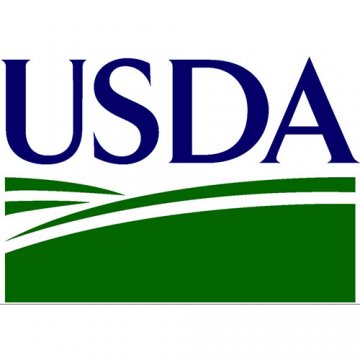By: Natalina Sents
Secretary of Agriculture Sonny Perdue announced Monday that farmers and ranchers who suffered damage from hurricanes and wildfires in 2017 may now apply for recovery assistance. Sign up opened July 16, 2018 and will remain open through mid-November. According to a USDA press statement, if funds are still available, more payments may be issued later in the year.
This program was authorized by Congress earlier this year by the Bipartisan Budget Act of 2018 and is called the 2017 Wildfires and Hurricane Indemnity Program, or 2017 WHIP.
“Hurricanes and wildfires caused billions of dollars in losses to America’s farmers last year. Our objective is to get relief funds into the hands of eligible producers as quickly as possible,” said Secretary Perdue. “We are making immediate, initial payments of up to 50% of the calculated assistance so producers can pay their bills.”
Eligibility
For hurricane victims to be eligible, damaged crops, trees, bushes, or vines must be in a county declared in a Presidential Emergency Disaster Declaration or Secretarial Disaster Designation as a primary county. That list is available here through the FSA. It includes parts of Alabama, Florida, Georgia, Louisiana, Mississippi, South Carolina, and Texas.
Losses in counties not designated as a primary county may be eligible if the producer provides documentation showing that the loss was due to a hurricane in 2017.
Wildfire losses will be evaluated on an individual basis.
Eligibility is determined by FSA county committees.
Losses due to excessive rain, high winds, flooding, mudslides, fire, and heavy smoke from last year’s wildfires and hurricanes could qualify for assistance through this program. For the most part, 2017 WHIP is designed to assist in situations of production loss, but if quality was taken into consideration under the insurance or Noninsured Crop Disaster Assistance Program (NAP) policy, where production was further adjusted, the adjusted production will be used in calculating assistance for this program, USDA explains.
Crops for which federal crop insurance or NAP coverage is available are eligible for 2017 WHIP, except for crops intended for grazing. The list of crops covered by crop insurance is available here through the USDA’s Actuarial Information Browser. Or paste this into your browser: https://webapp.rma.usda.gov/apps/actuarialinformationbrowser/
“Both insured and uninsured producers are eligible to apply for 2017 WHIP. However, all producers receiving 2017 WHIP payments will be required to purchase crop insurance and/or NAP, at the 60% coverage level or higher, for the next two available crop years to meet statutory requirements. Producers who fail to purchase crop insurance for the next two applicable years will be required to pay back the 2017 WHIP payment,” the USDA press statement says.
Payment Calculation and Limits
The FSA website explains, “USDA is determining compensation by a producer’s individual losses rather than an average of losses in the area.”
In order to do this, the size of the loss and the level of insurance coverage elected by the producer will be taken into account.
The producer’s coverage level will be used to determine a WHIP factor. Farmers and ranchers who chose higher coverage levels will receive higher WHIP factors.
2017 WHIP payment factors range from 65% to 95%. Producers who did not insure their 2017 crops will receive 65% of the expected crop value. Insured producers will receive between 70% and 95% of expected value.
After the WHIP factor is determined it will be multiplied by the expected value of the crop. Then value of the crop harvested, and insurance indemnity will be subtracted to determine final payment amount.
Payments to each eligible producer will be limited to either $125,000 or $900,000 depending on their verified average adjusted gross income. Tax years 2013, 2014, and 2015 will be used to calculate average.
If less than 75% of the person or legal entity’s average adjusted gross income is average adjusted gross farm income the payment limit is $125,000. In other words, if more than 25% of a person’s income comes from off farm sources, they may be subject to the $125,000 payment limit.
If 75% or more of the average adjusted gross income of the person or legal entity is average adjusted gross farm income the payment limit $900,000. Put another way, if a person makes less than 25% of their income from off farm sources, they may be eligible for payments up to $900,000.
Application Process
Farmers who have not established farm records with their local USDA service center are encouraged to start the application process as soon as possible.
To begin, bring proof of identity such as a driver’s license or Social Security card, along with a copy of the recorder deed, survey plat, rental, or lease agreement of the land. Note, you do not have to own the land to participate in FSA programs. Entities should bring corporation, estate or trust documents as well.
Once the process is underway, producers will need to provide verifiable production records by crop, type, practice, intended use, and acres for the last five years. If you already have this information on file with USDA, you will not need to provide it again.
If you are unable to provide production records, the USDA will calculate the yield based on 65% of county expected yield.
Other Disaster Assistance Programs
USDA offers several other programs for farmers and ranchers impacted by natural disasters.
The Bipartisan Budget Act of 2018 also provided funding for the Emergency Conservation Program and the Emergency Watershed Protection Program. It also updated the Emergency Assistance for Livestock, Honeybees and Farm-raised Fish Program, Tree Assistance Program and Livestock Indemnity Program.
Learn More
For more information on FSA disaster assistance programs, contact your local USDA service center or visit farmers.gov/recover/whip.









